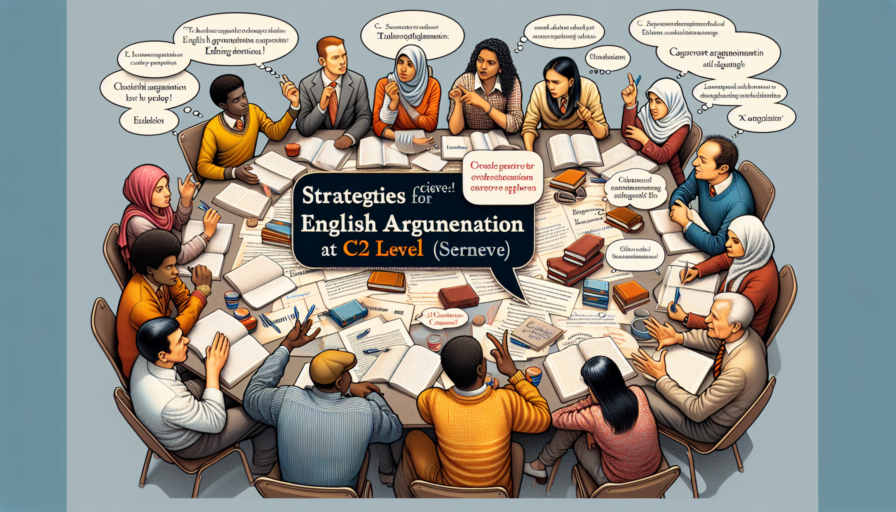
Contents
At Britannia School, we strive to cultivate a comprehensive understanding of the C2 Level of English Proficiency. This level, often regarded as the highest tier in the Common European Framework of Reference for Languages (CEFR), represents a mastery of the English language that goes beyond mere fluency. For us, this means not just understanding the nuances of language but also the ability to engage with complex texts and articulate thoughts with precision.
The C2 Level of English Proficiency is characterized by several key competencies that our students aspire to achieve:
Achieving the C2 Level of English Proficiency not only enhances an individual’s communication skills but also opens doors to academic and professional opportunities worldwide. We believe that reaching this level allows us to appreciate the cultural subtleties embedded within the language and to interact on a deeper level with native speakers, enriching our learning journey at Britannia School.
Crafting a compelling argument is essential for effective communication, especially in educational settings like ours at Britannia School. To achieve this, we explore several key strategies that enhance our ability to persuade and engage our audience. By focusing on these techniques, we can refine our arguments to be more impactful and relatable.
First, we must always begin with a clear and concise thesis statement. This statement serves as the backbone of our argument, outlining our position in a way that grabs attention. We can follow up with relevant data and statistics, which bolster our claims while providing credibility to our points. Including counterarguments allows us to demonstrate an understanding of differing viewpoints, and when we address these objections directly, we fortify our own stance.
Next, utilizing emotional appeal enhances the persuasiveness of our arguments. By incorporating anecdotes and relatable scenarios, we connect with our audience on a personal level. Furthermore, we should aim to establish a rapport by employing an engaging tone and appropriate language that resonates with our listeners. Our goal is to not only inform but also inspire action through our words.
Finally, incorporating structured reasoning is crucial. We should aim for a logical progression of ideas, connecting our points seamlessly. Utilizing visual aids, such as charts and diagrams, can provide clarity and help emphasize critical aspects of our argument. By ensuring that our arguments are well-organized and visually appealing, we maintain our audience’s attention and facilitate understanding.
When we embark on the journey of crafting a compelling argument, it’s essential to employ advanced techniques for structuring your argument effectively. These techniques not only enhance clarity but also bolster our persuasiveness in delivering our points. To achieve this, we can utilize several strategies that align our thoughts coherently and impactfully.
First and foremost, we can adopt the PEEL method, which stands for Point, Evidence, Explanation, and Link. By starting with a clear point, we present our argument succinctly. We then support it with concrete evidence, followed by an explanation that ties our evidence back to the main argument, and finally linking it to the next point ensures a smooth transition. This structured approach can significantly improve the effectiveness of our arguments.
Finally, incorporating visual aids or analogies can enhance our argument’s accessibility and relatability, further engaging our audience. By mastering these advanced techniques for structuring your argument effectively, we can elevate our rhetorical skills and foster deeper understanding among our readers.
In our journey towards mastering C2-level argumentation, we often encounter various pitfalls that can hinder our ability to effectively communicate our ideas. Recognizing and avoiding these common mistakes is crucial for refining our argumentative skills. Below, we outline some key errors we should be vigilant about:
By being aware of these common mistakes, we can enhance our C2-level argumentation skills and present our ideas with greater clarity and persuasiveness. Our evolution as effective communicators depends on continuous reflection and improvement in our argumentative approaches.
At Britannia School, we believe that mastering the art of argumentation is crucial for both personal and professional growth. To this end, we can engage in various practical exercises to enhance your argumentation skills, which will not only help us articulate our ideas more effectively but also empower us to understand opposing viewpoints. Here are some effective methods we can incorporate into our learning routine:
Engaging in these practical exercises to enhance your argumentation skills not only develops our argumentative prowess but also instills confidence in our communication abilities. As we practice these techniques, we become more equipped to handle complex discussions and advocate for our ideas effectively.